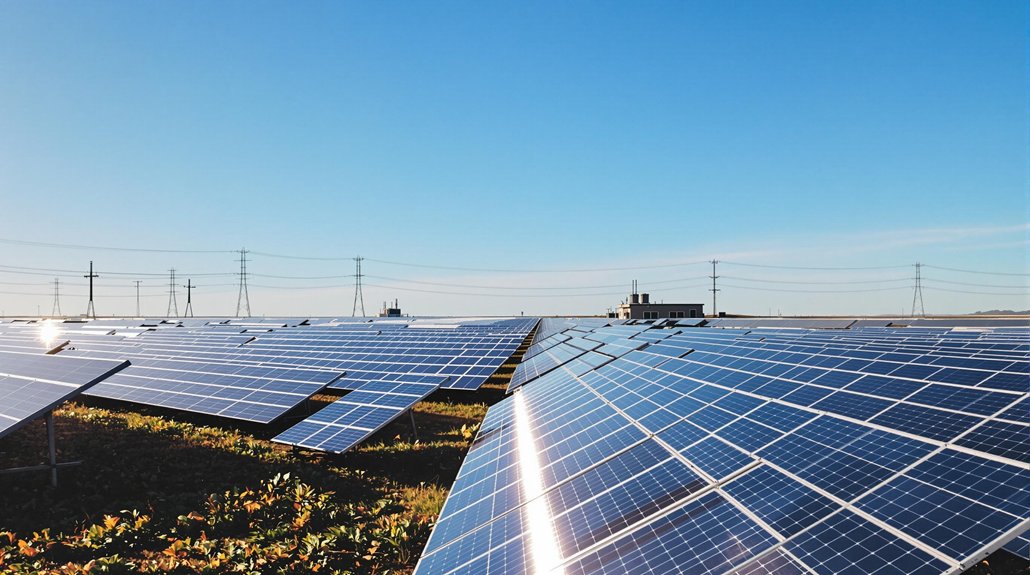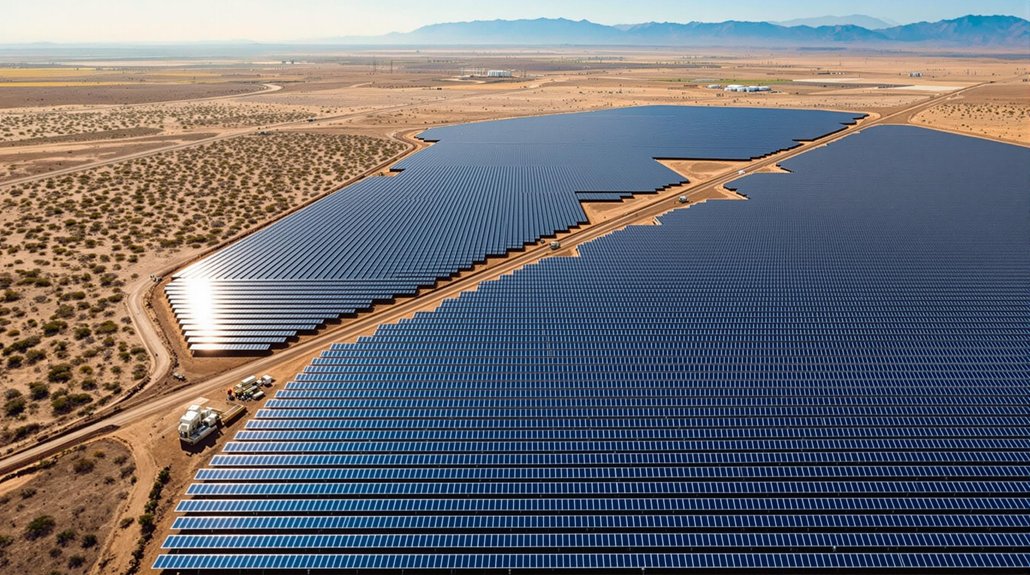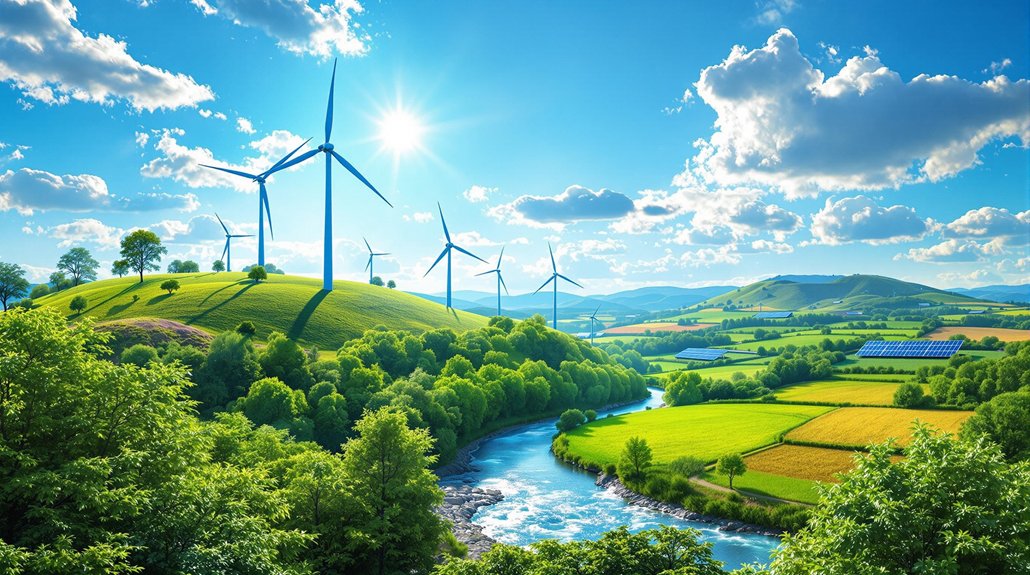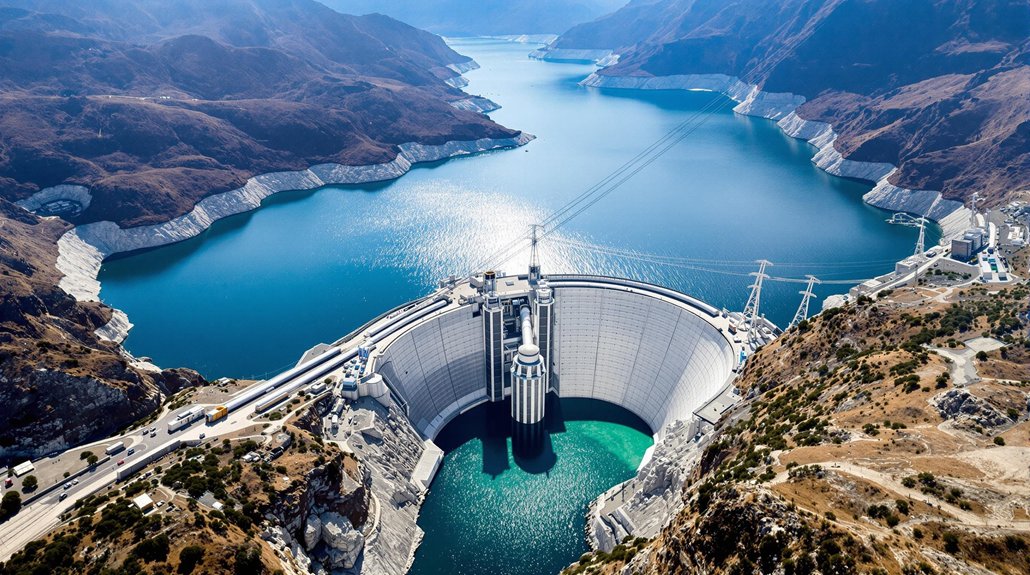A solar park is a large-scale facility that generates electricity from sunlight. It contains numerous solar panels that capture solar energy, inverters that convert DC power to AC power, and infrastructure to deliver electricity to the grid. These utility-scale installations typically cover 5-10 acres per megawatt and can power thousands of homes. Solar parks produce clean energy with minimal emissions during operation. The technology continues to evolve with advanced tracking systems and floating designs.

A solar park is a large-scale electricity-generating facility that uses sunlight as its power source. These installations, also called solar farms or solar power stations, are designed to capture sunlight and convert it into electricity that feeds into the utility grid. Unlike small rooftop systems on homes, solar parks are utility-scale projects that can generate enough power for thousands or even millions of households.
Solar parks contain several key components that work together. The most visible elements are the photovoltaic modules or solar panels that capture sunlight. These panels connect to inverters that convert the direct current (DC) electricity into alternating current (AC) that can be used on the power grid. This conversion process is essential as most household and commercial applications require AC electricity for operation. The system also needs mounting structures, transformers, and transmission infrastructure to deliver the electricity.
The size of solar parks varies widely. Small utility projects might be just 1 megawatt (MW), while the largest plants exceed 2,000 MW in capacity. A typical solar park requires between 5 and 10 acres of land for each megawatt of generating capacity. Developers usually choose flat, clear land with abundant sunshine and good access to existing power lines.
Solar parks come in different types. Some use fixed panels that don’t move, while others employ tracking systems that follow the sun’s path across the sky. Single-axis trackers move from east to west, while dual-axis trackers adjust for both daily and seasonal sun position changes. Some parks use mirrors or lenses to concentrate sunlight, and newer installations may even float on water.
While operating, solar parks don’t produce air pollution or greenhouse gases. However, they can impact local ecosystems and wildlife habitats. They represent a significant upfront investment but have low operating costs over time. Many solar parks operate under power purchase agreements with utilities, providing stable income over decades.
They also create jobs during construction and operation phases, while offering landowners income through lease arrangements. Some innovative solar parks implement agrivoltaic systems that allow for simultaneous agricultural production and energy generation on the same land. Solar parks can effectively generate electricity even on cloudy days, though at reduced capacity compared to clear sunny conditions.
Frequently Asked Questions
How Long Does It Take to Build a Solar Park?
Building a solar park typically takes 18-36 months from start to finish.
The timeline includes several phases: planning and permitting (6-12 months), design and engineering (3-6 months), construction (6-12 months), and commissioning (1-2 months).
Factors affecting completion time include project size, location, weather conditions, and regulatory requirements.
Larger utility-scale projects generally take longer than smaller installations.
What Happens to Solar Panels After Their Lifespan Ends?
After their 25-30 year lifespan ends, solar panels face several fates. Most currently end up in landfills, though recycling options are growing.
During recycling, workers separate aluminum frames, glass, and valuable metals like silver and copper. Some panels are refurbished for less demanding uses or sold in secondary markets.
While only about 10% of panels are recycled today, experts predict this rate will increase as waste volumes grow.
Can Wildlife Coexist Within Solar Parks?
Wildlife can thrive within solar parks when properly designed.
Research shows that native plants between panels attract up to four times more pollinators. Raised panels create habitat for small animals, while the shade forms beneficial microclimates.
Some solar farms now feature wildlife corridors and special fencing with openings for animal movement.
Even endangered species like desert tortoises have been found living successfully on certain solar installations.
How Do Solar Parks Perform During Cloudy Weather?
Solar parks continue to produce electricity during cloudy weather, though at reduced levels—typically 10-25% of their normal output.
They’re designed with technologies that can capture diffuse light on overcast days. Some solar parks use bifacial panels that absorb light from both sides, while others employ tracking systems to adjust panel angles.
Modern parks also incorporate energy storage systems to maintain consistent power delivery despite cloud cover.
Do Solar Parks Affect Property Values in Nearby Communities?
Research shows mixed effects of solar parks on nearby property values.
Studies indicate homes within half a mile may experience a small decrease in value, averaging 1.5%. Impacts vary by location—some states show 4-5% decreases while others show no effect.
Factors influencing impact include the solar farm’s size, prior land use, and distance from homes. Proper landscaping and smaller projects typically cause minimal value changes.









